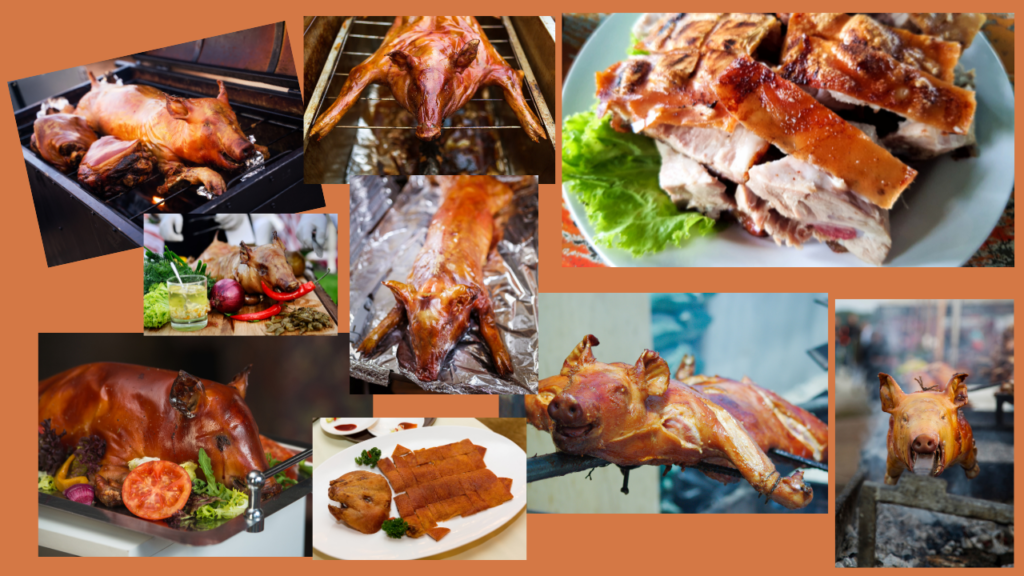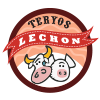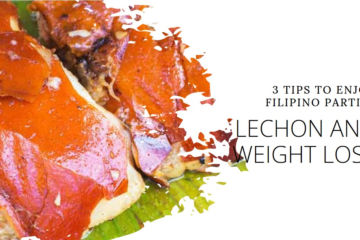Roasted pig dishes are enjoyed in many cultures around the world, and each has its unique way of preparing this delicious treat. One of the most famous is lechon, a beloved dish from the Philippines. Let’s take a journey to compare lechon with other roasted pig dishes from different parts of the globe. We’ll explore what makes each one special and how they are cooked.

What is Lechon?
Lechon is a traditional Filipino dish where a whole pig is roasted over an open fire. The word “lechon” comes from the Spanish word for “milk” because it was originally made with suckling pigs. Today, lechon can be made with pigs of various sizes.
How is Lechon Made?
Making lechon is a big event, often part of celebrations like weddings, birthdays, and holidays. Here’s a simple explanation of how it’s done:
- Preparation: The pig is cleaned and seasoned with a mix of herbs and spices. Common ingredients include salt, pepper, garlic, and lemongrass.
- Roasting: The seasoned pig is skewered on a large stick and slowly roasted over a charcoal fire. It is turned continuously to cook evenly and achieve crispy skin.
- Serving: Once cooked, the lechon is usually chopped into pieces and served with a dipping sauce made from vinegar, soy sauce, and garlic.
The result is a pig with crispy, flavorful skin and tender, juicy meat.
Comparing Lechon to Other Roasted Pig Dishes
Lechon is just one way to enjoy roasted pig. Let’s compare it to similar dishes from around the world.
1. Cochinillo Asado (Spain)
Cochinillo asado is a Spanish dish made with a suckling pig. This dish is particularly famous in the region of Segovia.
How is it Made?
- Preparation: The pig is cleaned and seasoned simply with salt.
- Roasting: It is roasted in a clay oven, which helps retain moisture and flavor. The cooking time is shorter than lechon due to the smaller size of the piglet.
- Serving: The pig is traditionally cut with a plate to show how tender the meat is.
Comparison to Lechon:
- Both are whole roasted pigs but cochinillo asado uses younger, smaller pigs.
- Lechon has a more complex seasoning compared to the simple salt seasoning of cochinillo asado.
2. Kālua Pig (Hawaii)
Kālua pig is a traditional Hawaiian dish often prepared for luaus, which are festive gatherings.
How is it Made?
- Preparation: The pig is cleaned and seasoned with Hawaiian sea salt and sometimes wrapped in ti leaves.
- Roasting: The pig is cooked in an imu, an underground oven. It is placed on hot rocks and covered with soil to cook for several hours.
- Serving: The pig is shredded and served with rice and other traditional Hawaiian side dishes.
Comparison to Lechon:
- Kālua pig is cooked underground, giving it a smoky flavor, while lechon is roasted above ground.
- Lechon has a crispy skin, whereas kālua pig is moist and tender without the crispy exterior.
3. Porchetta (Italy)
Porchetta is a savory, fatty, and moist boneless pork roast from Italy.
How is it Made?
- Preparation: The pork is deboned, seasoned with garlic, rosemary, fennel, and other herbs, and then rolled and tied.
- Roasting: It is roasted in an oven until the skin is crispy and the meat is flavorful and tender.
- Serving: Porchetta is usually sliced and served as a main dish or in sandwiches.
Comparison to Lechon:
- Porchetta is boneless and heavily seasoned with herbs, while lechon is cooked whole with a simpler seasoning.
- Both dishes feature crispy skin but have different flavor profiles due to their seasonings.
4. Char Siu (China)
Char siu is a Cantonese style of barbecued pork, known for its red color and sweet flavor.
How is it Made?
- Preparation: The pork is marinated in a mixture of honey, five-spice powder, soy sauce, hoisin sauce, and red food coloring.
- Roasting: It is roasted in a traditional oven or over an open fire until it is caramelized and slightly charred.
- Serving: Char siu is often sliced and served with rice or noodles.
Comparison to Lechon:
- Char siu uses a marinade with a sweet and savory flavor, unlike the savory seasoning of lechon.
- Char siu is typically made with pork cuts rather than a whole pig.
5. Leitão à Bairrada (Portugal)
Leitão à Bairrada is a Portuguese dish from the Bairrada region, known for its crispy skin and tender meat.
How is it Made?
- Preparation: The suckling pig is cleaned and seasoned with a paste of garlic, pepper, and other spices.
- Roasting: It is roasted in a wood-fired oven, which gives it a unique flavor and crispy skin.
- Serving: The pig is usually served with potatoes and a salad.
Comparison to Lechon:
- Both dishes are whole roasted pigs with crispy skin, but the seasoning and cooking method differ.
- Leitão à Bairrada is typically seasoned with a spice paste, while lechon uses a simpler blend of herbs and spices.
Roasted pig dishes like lechon, cochinillo asado, kālua pig, porchetta, char siu, and leitão à Bairrada showcase the culinary diversity of different cultures. Each dish has its unique preparation, seasoning, and roasting techniques, resulting in distinct flavors and textures. Lechon stands out with its savory seasoning and crispy skin, making it a beloved centerpiece for celebrations in the Philippines.
These dishes highlight how food can bring people together, each with its story and tradition. Whether you’re enjoying a piece of lechon at a Filipino fiesta, savoring cochinillo asado in Spain, or indulging in kālua pig at a Hawaiian luau, roasted pig dishes offer a delicious glimpse into the culinary heritage of different cultures around the world.


0 Comments